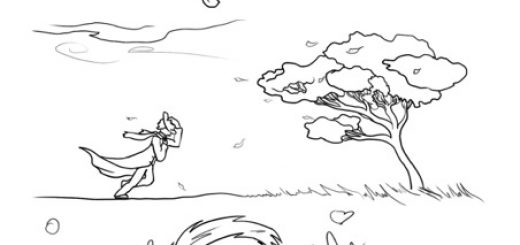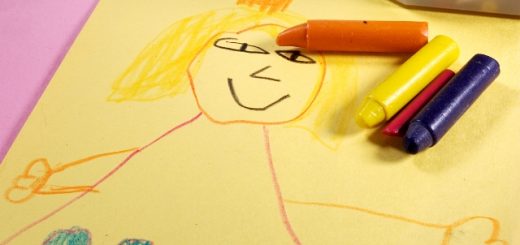6 Laws of Aerial Perspective or How to Create an Illusion of Space in the Drawing
It’s common knowledge that we are surrounded by air – transparent medium which changes with the increasing distance, humidity, dust particles, pressure and etc. When air blankets an object, it changes its appearance and color in some way. All of it should be taken into account at drawing, otherwise, everything that you would like to convey in paper will be wrong and inexact. That’s why when drawing a landscape you should know and implement the laws of aerial perspective. So, what is aerial perspective? It’s alterations of some attributes of an object under aerial environment and space. So, let’s talk now about the laws of aerial perspective.
The first law of aerial perspective is: all close objects are perceived in detail and distant objects are perceived collectively, that’s why objects in the forefront should be depicted very carefully and precisely, with drawing all details and portraying all individual features. Objects in the background should be sketched only schematically, without drawing their details, but making an outline of plain mass using colors and shades.
The second law of aerial perspective: all close objects are perceived clearly, and distant objects – indefinitely. To correctly convey space in the drawing it is necessary to make outlines of closer objects edgier than those of the distant. Indeed, though air is transparent, its movements raise up fine particles of dust, smoke, drops of water and disperse them. These particles cloud the air and make it less transparent. Far-away objects are inveiled with the clouded air and lose sharpness of outlines and small details. The outlines of objects are even softer and more amorphous in foggy and nasty weather.
Such hazy and dirty air environment doesn’t only dissolve boundaries of remote objects but also alters lightness of their surfaces. If sunlit objects located in the forefront and in the distance are compared, it can be noticed that there is a huge difference in their contrast and lightness. Lightness of remote objects as if decreases because of dim thickness of air. On the contrary, dark surfaces become lighter in the distance as light reflects all around off the opacifying particles. In this way a light cloudy veil occurs that makes dark objects lighter. These natural phenomena determine the third law of aerial perspective that lighter objects look dimmer in the distance while darker objects lighter than objects in the front. So, to demonstrate space in the painting lighter objects should be slightly shaded while darker objects should be made fairer.
The fourth law of aerial perspective is that all closer objects have hard light and shade effects and seem voluminous and remote objects have feebly-marked light and shadow and seem equally gray, flat, non-material. To depict space, closer objects should be drawn dimensional, and remote objects – plain. To draw objects in the foreground in the perspective, it is necessary to draw all sunny surfaces shining and show dense dark shadows on the edges deepened or turned away from the sun. In greater distance this contrast between light and shadow disappears with lightened surfaces becoming equal in brightness to the shaded ones.
The fifth aerial law says that all remote objects being clouded with distance fog acquire colors of this fog such as violet, blue, light blue or beige. To show space it is necessary to color closer objects brighter than remote objects. Indeed, no matter how transparent and clear air may be, it always contains cloudy particles. Rays of light passing through air layers and stumbling upon solid particles are reflected and dispersed creating a light curtain. If the amount of solid particles in the air is not great then the fog gives a purple shade to the background. The thicker the air, the more short-wave rays of blue and light blue are dispersed. Thus, the greater the distance, the more intense blue and light blue.
The sixth law of aerial perspective: all closer objects seem multi-colored, and remote objects – monochromatic. To show perspective, closer objects should be colored in different colors and remote objects – in similar colors. For example, when drawing grass in the foreground we can see various shades of green – yellowish in lightened spots, bluish in folds, brown in shaded places. To draw grass in the background we can use only a couple of shades for general presentment.
It is the knowledge of laws of aerial perspective that helps us to correctly portray space in the drawing. However, it is not enough. To create realistic drawings and pictures, it is necessary to master methods and techniques of drawing the most common natural forms and ways of sketching different natural states. That’s what we’ll talk about in the next article.


